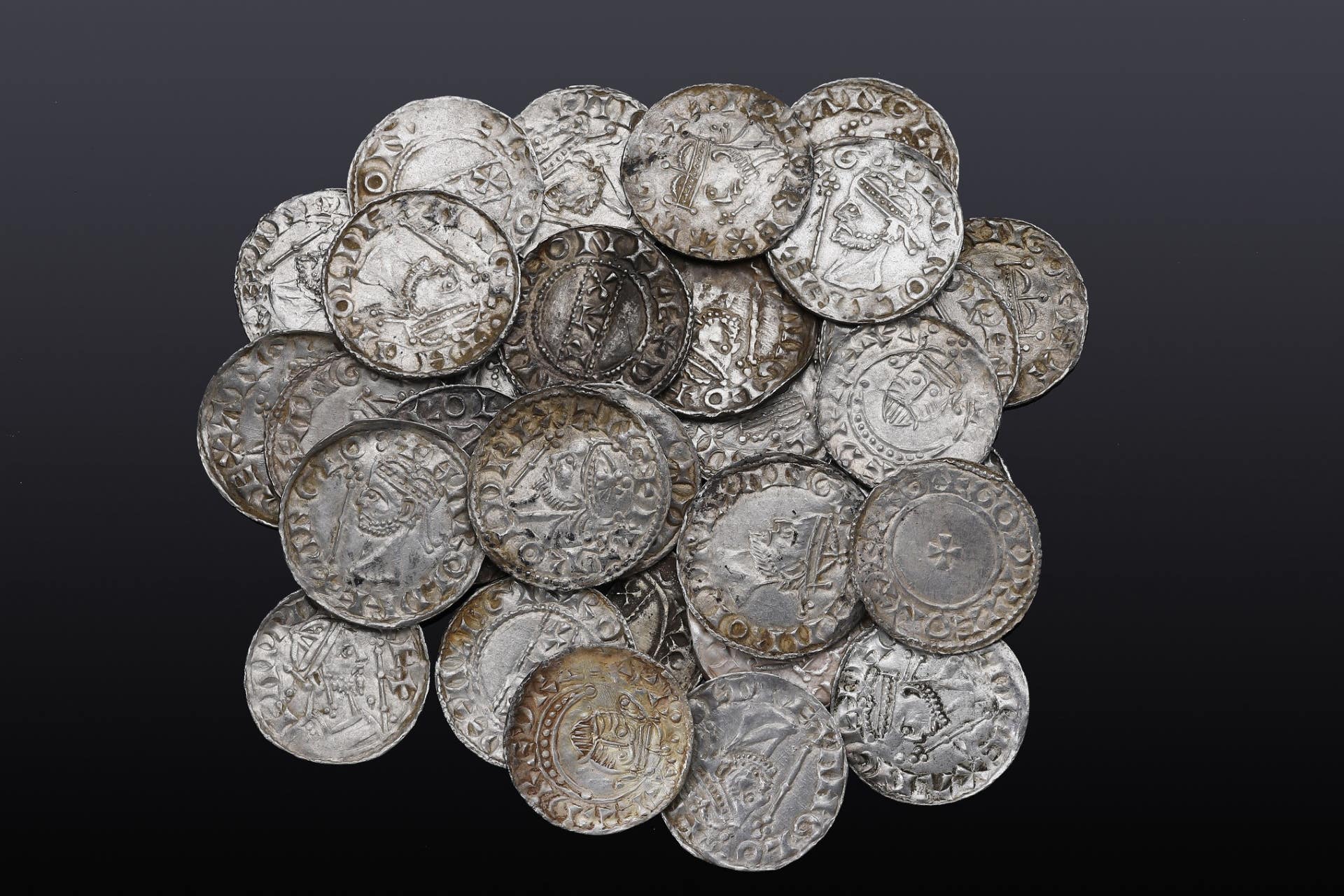Hoard of 122 Anglo-Saxon pennies could fetch £180,000 at auction
The auction at Noonans Mayfair will take place on February 21 and the proceeds will be shared between two metal detectorists and the landowner.

Your support helps us to tell the story
From reproductive rights to climate change to Big Tech, The Independent is on the ground when the story is developing. Whether it's investigating the financials of Elon Musk's pro-Trump PAC or producing our latest documentary, 'The A Word', which shines a light on the American women fighting for reproductive rights, we know how important it is to parse out the facts from the messaging.
At such a critical moment in US history, we need reporters on the ground. Your donation allows us to keep sending journalists to speak to both sides of the story.
The Independent is trusted by Americans across the entire political spectrum. And unlike many other quality news outlets, we choose not to lock Americans out of our reporting and analysis with paywalls. We believe quality journalism should be available to everyone, paid for by those who can afford it.
Your support makes all the difference.A hoard of 122 Anglo-Saxon pennies, whose owner may have died fighting in the Battle of Hastings, are to be sold at auction after two metal detectorists unearthed them in a field.
It is thought the coins, discovered near Braintree in Essex, were buried in 1066, the year of the battle between English and Norman armies for the throne of England.
An expert said the coins were worth a “considerable sum of money” and there was a “tantalising possibility” that the reason they were not retrieved at the time was because their owner died in battle.
Two metal detectorists discovered the hoard of 144 coins in 2019, and 16 of them were bought by Colchester Museum and Cambridge’s Fitzwilliam Museum after they were processed under the terms of the 1996 Treasure Act.
The coins bought by the museums included two 11th century Byzantine coins.
In late 2023, the remaining coins were disclaimed and returned to the finders.
Now 122 of the coins are to be sold at Noonans Mayfair, with an estimate of up to £180,000, with the others to be kept by the metal detectorists.
It is thought the coins were buried in 1066, within five years of all bar two of the coins being minted.
Noonans Coin specialist Bradley Hopper said: “While the deposition of the Braintree Hoard might not relate directly to the events of 1066, the fact that it was never recovered surely did.
“Twelve shillings was a considerable sum of money, and its retrieval must have been prevented by some great personal misfortune; we cannot say with any certainty whether or not the Braintree hoard’s owner died fighting at Hastings, but it is a tantalising possibility.”
The two detectorists who found the coins have been searching together for 20 years, and previously had only found copper coins and crotal bells in the field.
But on the day of discovering the hoard, a signal from the Minelab CTX 3030 metal detector revealed at a depth of four inches a silver penny that was not recognisable.
Half a dozen more turned up in a 30-metre radius and that evening they realised they were rare pennies of Harold II.
We are particularly fortunate that the auction catalogue contains not only the rarest and most academically interesting English coins from the Braintree Hoard, but also those pieces in the finest state of preservation
Over the next few days around 70 more were found by slow and methodical use of the detectors, with the rest discovered in 2020 when the exercise was repeated.
Coins that date from the last two Anglo-Saxon kings of England – Edward the Confessor and Harold II Godwinsson – had been minted in various towns and cities including London, Cambridge, Canterbury, Ipswich, Chichester, Guildford, Worcester, Hastings, Lincoln, Huntingdon and Maldon, as well as at rare mints such as Sudbury in Suffolk and Bridport in Dorset.
Auctioneers described a Harold II penny from the Guildford moneyer Leofwold, which is part of the hoard, as “excessively rare” and it has an estimate of £5,000 to £6,000.
A single specimen from the Hastings mint, also estimated at £5,000 to £6,000, was described as only the second to appear at public auction in the last 40 years.
“We are particularly fortunate that the auction catalogue contains not only the rarest and most academically interesting English coins from the Braintree Hoard, but also those pieces in the finest state of preservation,” said Mr Hopper.
The auction at Noonans Mayfair will take place on February 21 and the proceeds will be shared between the two finders and the landowner.